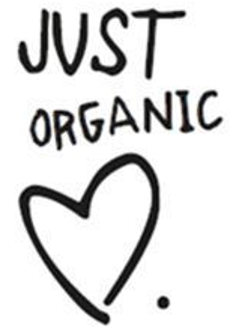Protecting a descriptive organic brand via graphic? – JUST ORGANIC
The case: In the organic and sustainability sector in particular, the consumer’s decision to buy is often influenced by an organic brand that contains a direct reference to the special characteristics of the goods or services. This is because such signs convey the important message concerning the nature of a product in a very simple way.
However, the protectability of such an organic brand is problematic. A trademark’s essential function is to identify the commercial origin of the goods or services it covers. Indeed, when a consumer purchases the goods or services identified by the trademark, the trademark is intended to enable them to make a repeat purchase – or not – based on whether their experience has been good or bad. A sign that is considered to designate specific characteristics of the goods or services is unsuitable for such purposes and cannot be registered as a trademark unless it has acquired distinctive character through use.
just-organic.com GmbH had come up with such a directly descriptive but advertising-effective sign for cosmetics, food and an online marketplace, as well as online publications, namely the indication ‘JUST ORGANIC’.
‘JUST ORGANIC’ obviously indicated, in relation to the cosmetic and food products, that they are organic, while in terms of the online marketplace and the online publications, these words indicated that organic products were to be sold or presented.
But how can such a descriptive sign be made protectable as a trademark without diluting its advertising message?
just-organic.com GmbH saw the obvious solution – adding a heart graphic to the descriptive words. With this design, it then applied for the figurative sign below as an EU trademark:

Was the figurative element sufficient for customers to infer from the sign as a whole the necessary reference to a particular company?
No, said the Court of First Instance of the European Union, confirming the decisions of the lower courts. The heart motif would be perceived by customers merely as confirmation of the words ‘JUST ORGANIC’. It underlines the statement that the products are healthy and that the object of such services is to sell or promote these products. Moreover, the position of the heart is just below the words, arranged vertically, and therefore has only a subordinate function. In addition, the dot next to the heart did not carry any significant weight in the overall impression of the sign because it would be perceived merely as a punctuation mark or as a decorative rounding-off.
The organic brand could therefore, even with a graphic element, constitute a description of the organic properties of the goods and services. Consequently, it was not protectable for cosmetics, food, the online marketplace and online publications, and so was rejected.
However, just-organic.com GmbH had also applied for the organic brand in relation to the service of providing information in the field of entertainment. For these services, a sufficiently direct and concrete descriptive indication was lacking and so the sign was registered as a trademark for the entertainment aspect in question.
General Court of the European Union, judgement of 5 October 2022, T-802/21
Learnings: If you want to make an intrinsically descriptive sign registrable as a trademark by adding a graphic, you should make sure that the graphic is not merely of secondary importance/that it does not simply underline the descriptive character of the sign.